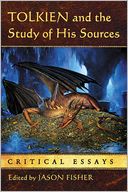I’ve been following, and to some extent participating in, a discussion over at Jake Seliger’s blog, The Story’s Story, on the subject of science fiction. Why so much of it is so bad, at least by the standards of the literary establishment — insert winking censure of ‘snobbery’ here — as compared to its popularity, and which science fiction (again, by those admittedly subjective standards) is actually good. I’m not going to engage in that debate here (though you’ll want to read this post as well its lengthier follow-up).
I have a different agenda today. I want to contrast two of the authors most of us agree are among the very best science fiction has to offer: Stanisław Lem and Ursula K. Le Guin.
If you haven’t read Lem or Le Guin, good starting points might be Solaris and The Left Hand of Darkness. Le Guin, as some of you may know, also writes fantasy, and the Earthsea Cycle is a must-read for fans of that genre. But today I’m thinking of science fiction specifically. If you move on to other books, as I’m sure you will, you might enjoy The Chain of Chance, in which Lem reinvents the crime thriller genre as a rumination on the Malthusian consequences of statistical causality — could anybody else have done that but Lem? I don’t think so! For Le Guin, readers should move on to the rest of Hainish Cycle, three of which won Hugo awards.
Now, thinking of these two excellent writers, I can’t help but regard them as both very different, but highly complementary. The Chinese concept of yin / yang springs to mind, where Lem and Le Guin strike me as 兩儀 /liangyí/, that is, ‘two mutually correlated opposites’ — hence the title of this post. Where Le Guin is warm, emotional, and somehow always ‘human’, Lem is cold, cerebral, and distinctly alien. Le Guin is sunny, Lem is overcast. Le Guin is lush, fertile, and fur-soft; Lem is barren, sterile, and gem-hard. Yet, for balance, you need both.
As a perfect example of this harmonizing contrast, set Lem’s novel, Solaris (1961), alongside Le Guin’s short story, “Vaster than Empires and More Slow” (1971). Without spoiling either, let me just say that each one brings human beings into contact with an enormous, collective alien species, planetary in size, and asks them — and us — to meditate on one of the oldest conflicts known to humankind: the Self versus the Other. Both stories have their share of brilliant moments, and to each can be applied the series of contrasting characterizations I gave above. Solaris is cold, cerebral, and frightening, while “Vaster than Empires” is warm, emotional, and ultimately welcoming. The protagonists, Kelvin and Osden respectively, have both suffered psychological traumas, but each relates to the Other differently. At the close of her story, Le Guin writes that Osden “had learned the love of the Other, and thereby had been given his whole self.” One cannot imagine Lem ever writing a passage like that. Where Le Guin finds the humanity in her extraterrestrial beings, Lem’s are and remain profoundly alien.
There is one additional point of contact between Le Guin and Lem that I find interesting. In 1973, Lem was inducted into the SFWA as an honorary member, even though actually ineligible according to the organization’s bylaws. Later, once he became technically eligible, the honorary membership was rescinded. Some American members, and apparently Lem himself, regarded this as a wrap on the knuckles for public criticisms Lem had made against much of American science fiction. (Criticisms which, I might add, are in the main perfectly true.) Because of the controversy, Lem declined to remain a member of the SFWA. Le Guin was one of Lem’s most vocal advocates in this imbroglio. Balance, Grasshopper. :)
And by the way, another honorary member (though technically ineligible at the time of his induction) was J.R.R. Tolkien. Might Tolkien and C.S. Lewis also be regarded as ‘two mutually correlated opposites’? They differ less than Lem and Le Guin, but the phrase — which I can’t help thinking Lem would have especially appreciated — still seems à propos.

